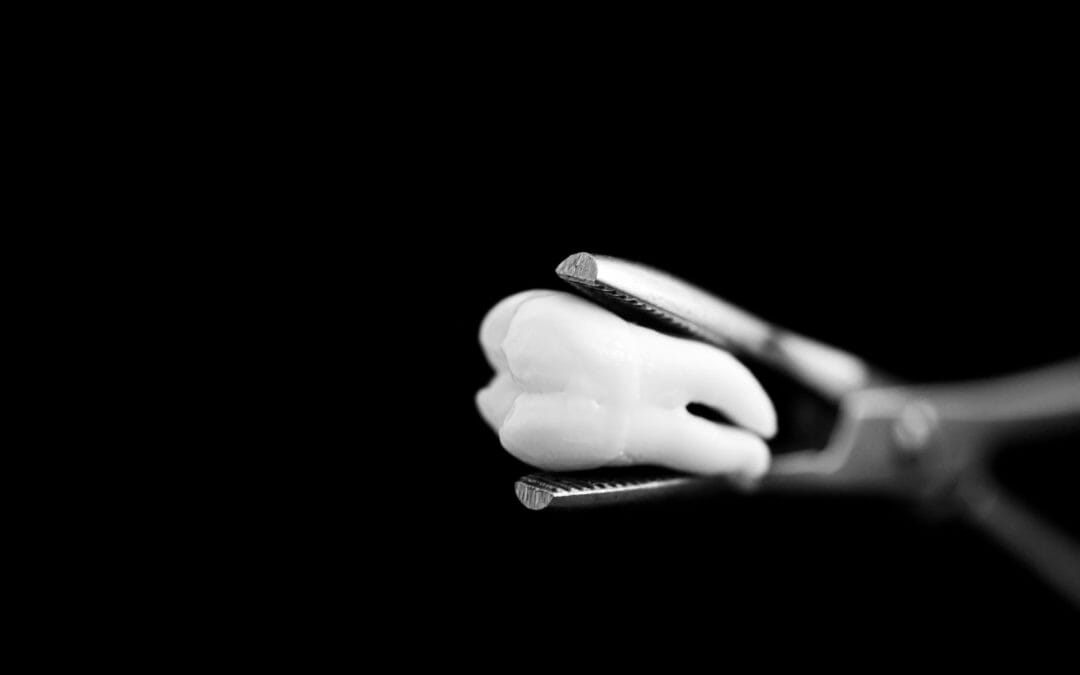Although dentists do everything they can to preserve a patient’s natural teeth, the health of our patients is our top priority, and, for this reason, tooth extraction is sometimes necessary in order to prevent serious infection and keep a patient healthy.
What Is a Tooth Extraction?
Tooth extraction is a procedure that involves removing a patient’s tooth. There are two types of tooth extractions: normal extraction and surgical extraction.
During a normal tooth extraction, a dentist loosens a patient’s tooth by rocking it back and forth in its socket. Once fully separated from the jawbone, the dentist then pulls the tooth, removing it and its roots in one simple motion. Regular tooth extractions can be performed when a tooth is strong enough and fully intact for all of its parts to be removed at once.
A surgical extraction is sometimes necessary when a tooth’s structure is too weak to stay together during extraction or when the tooth is already fractured into multiple pieces above and/or below the gum line. Rather than simply loosening a tooth and pulling it, a surgical extraction typically involves making an incision into the patient’s gums in order to remove fractured pieces of the tooth below the gum line. Surgical extraction also might involve the removal of a small portion of the jawbone material around the tooth’s root structures.
Both types of extractions take place with patients fully numbed using local anesthetics. Depending on the nature of a surgical tooth extraction, these types of procedures sometimes take place with a patient fully sedated under general anesthesia in an oral surgeon’s office. Surgical extraction under general anesthesia, for example, is common practice when extracting impacted wisdom teeth.
Why Do You Need to Have a Tooth Pulled?
There are several factors that can lead to the need to have a tooth extracted. A tooth might need to be pulled as a result of severe damage, decay, injury, or disease that results in the tooth being damaged, weakened, or infected beyond repair. Sometimes a tooth needs to be extracted after an infection develops beneath old, compromised dental work.
Additionally, the removal of wisdom teeth is commonly recommended as a preventive measure to avoid problems from occurring in the future. Removal is recommended because the wisdom teeth are difficult to clean, often overcrowd existing teeth when they come in, sometimes grow in the wrong direction, and commonly erupt impacted.
How Long Does It Take to Recover From a Tooth Extraction?
The amount of time required to fully heal after having a tooth pulled can really vary from patient to patient. Recovery time also depends on a few factors including:
- The type of tooth extraction performed
- The size of the tooth
- The location of the tooth
- The patient’s oral health and overall health
- Compliance with aftercare and recovery instructions
Healing From a Simple Tooth Extraction
The recovery process for a simple tooth extraction is typically fairly quick. After most of these simple extractions, we recommend resting for two to three days after the procedure, avoiding any vigorous or strenuous activity, hard foods, hot foods, and sucking through a straw. This rest period allows time for a clot to form in the tooth’s socket.
Once this has occurred, patients can resume normal activities. However, we recommend not drinking through a straw or doing any activities that create suction inside the mouth to avoid dislodging the clot until the gum tissue has healed fully.
The patient’s gum tissue and extraction site should be fully healed after about three to four weeks following the extraction of a large tooth. The extraction site of a smaller tooth with a single root can heal much more quickly. (Sometimes, in as little as a week.) For larger teeth, the indentation typically requires several months before it has healed and filled in.
Healing From a Surgical Tooth Extraction
The recovery time after a surgical tooth extraction is typically longer than that of a normal extraction. Immediately following the procedure, we recommend that patients rest for two to three days. Surgical extraction patients should wait at least a week and limit their physical activity, before resuming their normal activities or participating in anything more physically strenuous like sports.
Depending on the nature of the surgical extraction, the patient may or may not have dissolving sutures in their mouth to help keep gum tissue closed. Healing of gum tissues around the extraction site can take around six weeks, depending on the size of the hole. Like with simple extractions, it will be several months before the hole at the extraction site is filled in and smooth.
Tooth Extraction Recovery
To speed up the healing of your tooth extraction, it’s important to follow your aftercare instructions closely. These usually include instructions such as:
- Keeping your head elevated after the procedure
- Using over-the-counter anti-inflammatory medications to treat pain and reduce swelling
- Avoiding hard foods
- Avoiding hot or spicy foods
- Not using a straw
- Not smoking or using tobacco products of any kind
- Avoiding alcohol
- Using an oral plunger to irrigate and clean the extraction site
Tooth Extractions and Restorative Dentistry in West Bend
At Dentistry of West Bend, we provide our patients with comprehensive dental care, including tooth extractions and restorative dentistry services designed to help our patients restore their smiles after a tooth extraction or other issues that can affect the function and appearance of the smile.
To learn more about what to expect during after having a tooth pulled, we welcome you to contact our office to schedule a consultation with Dr. Jared Harding today.


Recent Comments